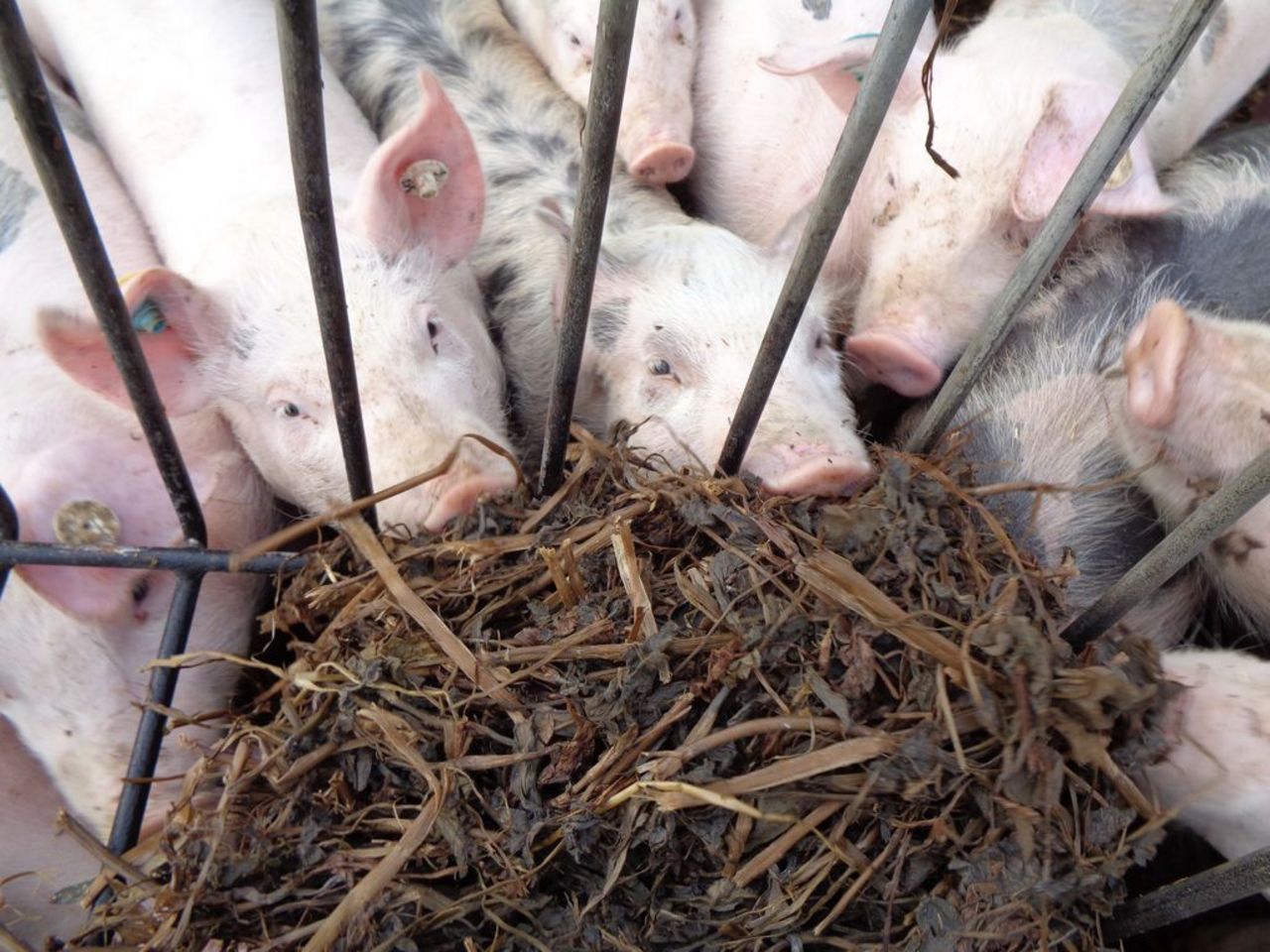Project
Feeding silage from early-cut red clover to fattening pigs

Feeding silage from early-cut red clover to fattening pigs
Feeding silage from early-cut red clover to fattening pigs
Forage legumes like red clover are an important part of organic crop rotations, but are rarely used as feed for pigs. This study sets out to determine the potential of ensiled red clover as feed for fattening pigs.
Background and Objective
Despite their high potential for supplying amino acids, forage legumes are rarely used as feed for pigs. While the European regulations for organic farming demand the provision of roughage to pigs, roughage is mostly regarded as a manipulable material without feed value. By feeding silage from early-cut forage legumes, the provision of roughage could be combined with an added feed value. Also, feeding forage legume would increase the proportion of regional feed in organic diets for pigs.
In our study, we will determine if feeding high-quality, early-cut silage as part of the diet of fattening pigs can help save concentrate feed without impairing growth performance and carcass quality.
In addition, a pilot study on the use of outdoor runs and the elimination behavior of pigs in barns with outdoor runs is carried out in cooperation with the "MeTEmSiS" project (Mehr Tierwohl und geringere Emissionen durch intelligente Schweine in innovativen Ställen) led by Friedrich-Loeffler-Institut.
Approach
In two replicates of 40 pigs each, feeding will either be based on concentrate alone, or with concentrate and silage.
The concentrate mixture of the experimental groups will be adjusted, based on the nutrient composition and the feed allowance of the silage.
Data collection includes feed allowance and weight gain of pigs, documentation of illnesses and medical treatments and carcass quality (carcass yield, meat percentage, …).
In addition, videos will be recorded and analysed with respect to the usage of the outside run and the elimination behavior of the pigs. The data will be used to answer the following questions:
1. Is elimination preceded by certain behavioral sequences?
2. How often do the fattening pigs use the outdoor run in total?
3. How often do the fattening pigs visit the run?
Preliminary Results
Data collection is still running, therefore there are no results available yet.
Links and Downloads
Thünen-Contact

Involved Thünen-Partners
Involved external Thünen-Partners
- Friedrich-Loeffler-Institut, Bundesforschungsinstitut für Tiergesundheit (FLI)
(Greifswald-Insel Riems, Braunschweig, Celle, Deutschland)
Duration
6.2019 - 6.2024
More Information
Project status:
ongoing
Publications
- 0
Witten S, Bussemas R, Stepczynski S, Machner M-T, Aulrich K (2023) Kleegrassilage als proteinreiches Raufutter in der Mastschweinefütterung. In: Bibic V, Schmidtke K (eds) One step ahead - einen Schritt voraus! : Beiträge zur 16. Wissenschaftstagung Ökologischer Landbau, 07.-10. März 2023, Frick (CH), FiBL Campus. 1. Auflage. Berlin: Verlag Dr Köster, pp 544-545
- 1
Witten S, Bussemas R, Aulrich K (2022) Young grass-clover-silage in the diet of fattening pigs. Proc Soc Nutr Physiol 31:
- 2
Witten S, Machner M-T, Bussemas R, Aulrich K (2021) Effects of feeding young grass-clover-silage in the diet of fattening pigs on fattening performance and carcass quality. Proc Soc Nutr Physiol 30: 46

![[Translate to English:] [Translate to English:]](/media/_processed_/8/e/csm_Bildschirmfoto_2021-03-03_bearb_fc48ac88bf.jpeg)
![[Translate to English:] [Translate to English:]](/media/_processed_/8/e/csm_Bildschirmfoto_2021-03-03_bearb_ba3ec0e9d7.jpeg)
![[Translate to English:] Logo des Bundesministerium für Ernährung und Landwirtschaft](/media/allgemein/logos/BMEL_Logo.svg)